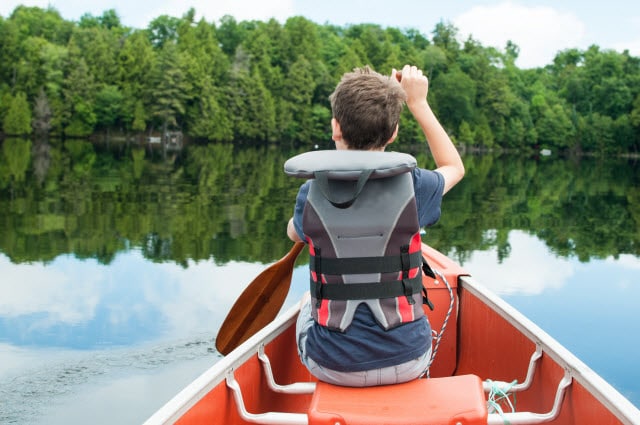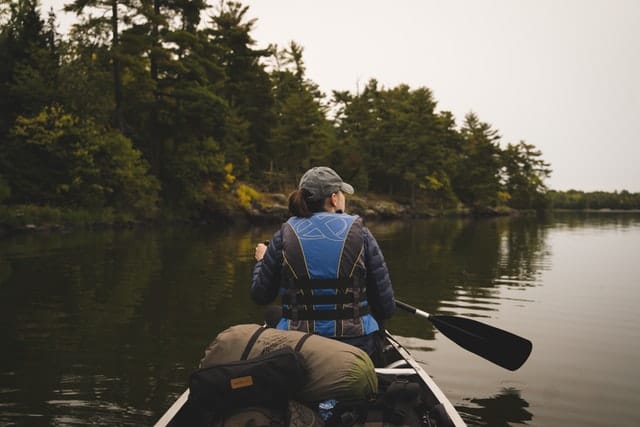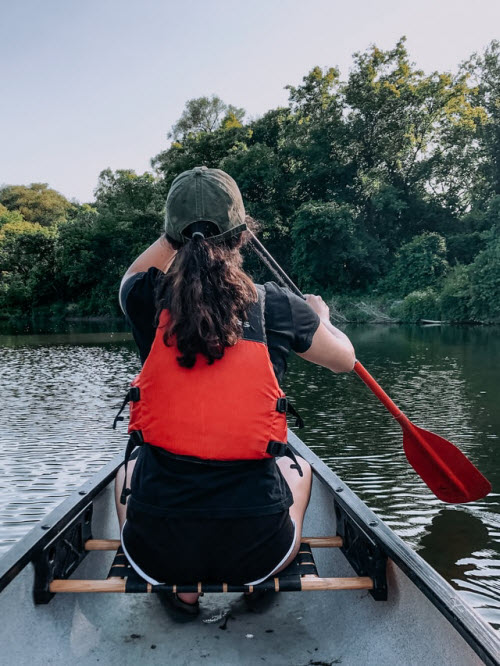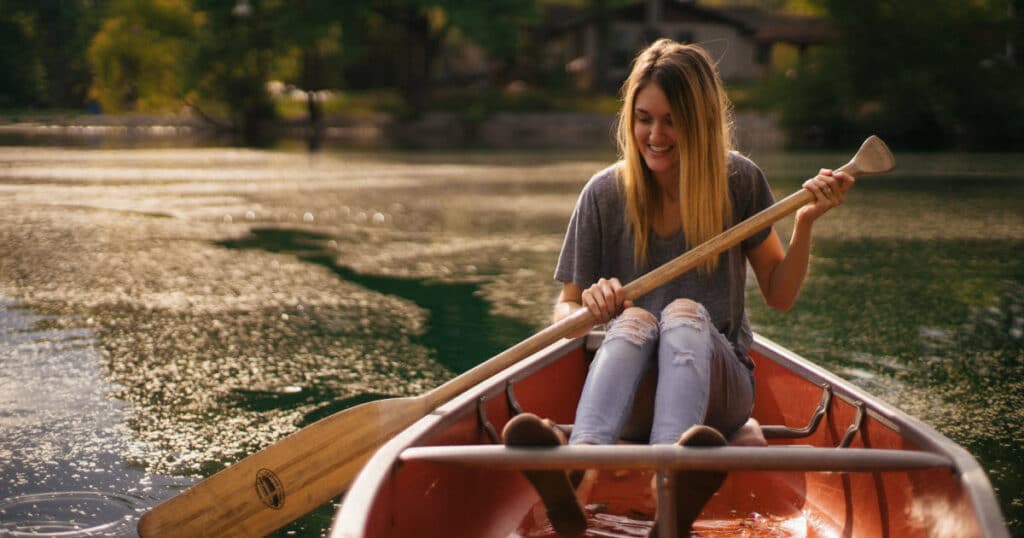If you’re new to canoeing, you are possibly wondering how to go about deciding on the best size for your canoe paddle. In this article, I will go over all the factors you need to take into consideration and help you determine how to size a canoe paddle. This will help you avoid muscle strain, and be comfortable while paddling your canoe.
Size a Canoe Paddle with Your Torso Length
The length of your torso is an important factor in determining how long of a paddle you need. The shortest paddle you should use is one that at least properly reaches the water when you’re holding it.
Keep in mind that when you’re going through your stroke, in the middle of the movement you will grip the paddle in way that your top hand will be around the height of where your nose is positioned. In this position, the blade of the paddle should meet the shaft (or the throat) at the surface of the water.

In order to measure your torso, sit on a flat chair. Make sure you are sitting up straight and measure how far it is from the seat of the chair between your legs to where your nose is. Below is a chart that will give you an idea of paddle lengths for each torso length:
| Torso Length | Length for Straight Shaft Canoe Paddle |
| 20″ | Youth 36″ |
| 22″ | Youth 42″ |
| 24″ | Youth 42″ |
| 26″ | 51″ or 52″ |
| 28″ | 54″ |
| 30″ | 56″ or 57″ |
| 32″ | 57″ or 58″ |
| 34″ | 60″ |
| 36″ | 62″ |
| 38″ | 64″ |
If you need to measure a paddle while in the field, you can do so by sitting and then positioning the paddle’s grip between your legs. Once you’ve done that, make a mark where the blade’s shoulder (this is the point at which the blade comes together with the shaft) touches you. Keep in mind that a straight shaft’s shoulder should reach your forehead, while a bent shaft’s shoulder should reach your nose.

Consider the Style of Your Canoe
If you have a flared canoe, extra-wide canoe, or a canoe that has high seats, then you will probably need a bit of a longer paddle. This will be necessary so that the blade can reach the water and won’t smash against the shaft on the canoe’s gunwale. It will also be less likely to hit your knuckles.
If you have a narrow tripping canoe, a canoe that has low seats, or tumblehome (inward leaning) gunwales, then choose a paddle that has a shorter shaft. Usually, this means choosing a shaft that is one size smaller than you would pick otherwise.
Size a Canoe Paddle Based on Type of Water
If you’re going on a lake or river, then you will probably want to use a straight paddle like this one available on Amazon. Straight paddles tend to be suitable for all of the common conditions that you’ll encounter on rivers and lakes.

When choosing your paddle, you will want to think about comfort, durability, and weight. Lake and river paddling generally calls for a paddle with a classic rounded palm grip. Symmetrical grips (the freestyle variety) is another option. This type gives you the option of using either face while paddling.
If you plan on staying in shallow waters, then you should go with a shorter paddle that has a flat bottom. The tip of the blade should include a resin that will improve its durability in shallow water.
Deep water, on the other hand, means that you should go with a more traditional type of paddle with a standard shaft length. This kind of paddle will go into and come out of the water more smoothly. Having a longer length will also mean that you have better control.
In many cases, using a canoe paddle that has an oval shaft will be easier to use. They usually mean you can paddle longer and more comfortably.

Paddles for Longer Trips and Racing
If you want to paddle for a longer distance or even try racing, then you will probably need a bent-shaft paddle like this one on Amazon. This type of paddle is usually more efficient. The bent-shaft paddle lets the canoe blade remain vertical for a longer duration of each stroke. You should be aware that bent-shaft paddles run about four inches shorter in length than straight paddles.
Experienced canoe paddlers who want to try whitewater will require a paddle that is able to withstand that kind of use. The paddle blade must have a urethane tip. This is necessary in order for it to be properly protected. A T-grip is also considered necessary because it gives better control than you’d have otherwise. Remember, don’t even think about trying whitewater until you’re very experienced and have taken canoeing classes with a qualified instructor.


